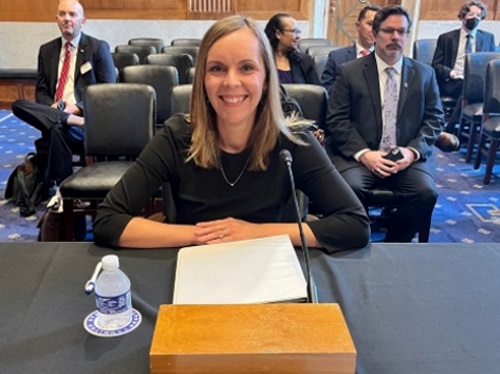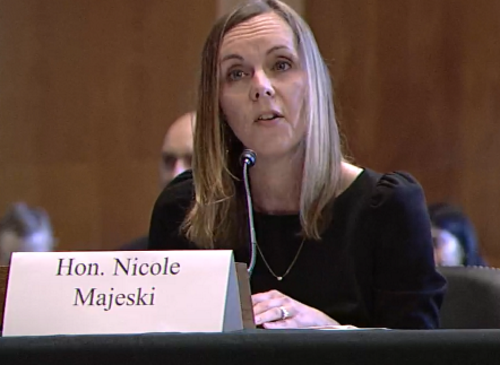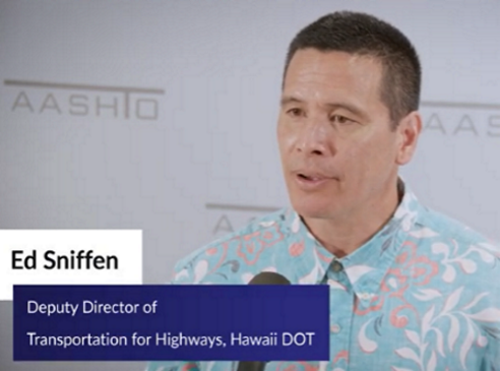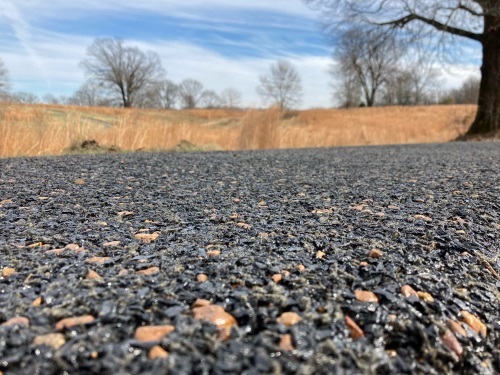FEDERAL ACTION
Four Federal Agencies Plan Broad GHG Reduction Push – AASHTO Journal
MARAD Initiates Low Carbon Shipping Study – AASHTO Journal
Biden’s point man on infrastructure law – Politico
Wildfire Smoke Is Erasing Progress on Clean Air – New York Times
DOE and DOT Announce Gabe Klein to Lead Joint Office of Energy and Transportation – US Department of Energy (Media release)
COVID-19
Can E-Bikes Rescue the Covid Bicycle Boom? – Bloomberg (Commentary)
INFRASTRUCTURE RESILIENCE AND SUSTAINABILITY
Unwinding really backward policy:’ California abolishes decades-old parking requirements – Sacramento Bee
Michigan DOT enters 5-year partnership to build first public in-road EV charging system in Detroit – WDIV-TV
In Houston, a generations-deep community is being dismantled by mandatory buyouts. – Grist
Hawaii’s road usage charge for EVs could have twists and turns – The Center Square
US’s Top Ports Face Calls to Go Green After ‘Unmitigated Growth’ – Bloomberg
NJ Transit Advances Zero-Emission Bus Conversion With Design And Investment Planning Study – NJ Transit (Media Release)
AIR QUALITY
California orders 29 hydrogen trains for inter-city services – International Railway Journal
The airline race for a breakthrough fuel to cut one billion tons of carbon is just starting – CNBC
Oregon on track to follow California emission standards – no new gas vehicles sold by 2035 – KPIC-TV
Minneapolis is the latest US city to demand emissions-free shipping – Grist
15 Most Polluted Cities in the US – Earth.org
Amtrak Aims to Achieve Net Zero Greenhouse Gas Emissions by 2045 – Amtrak (Media release)
ENVIRONMENTAL JUSTICE
Biden administration launches environmental justice office – AP
University Program Opens Highway To Success For Drivers With Autism Spectrum Disorder – Mercyhurst University
DOJ to tackle environmental justice issues that have ‘too long beleaguered’ communities – NBC News
NATURAL RESOURCES
Welcome to the High Desert highway that is one-of-a-kind in Oregon – Central Oregon Daily News
Weed Wranglers wanted for Bloomington Parks and Recreation – WBIW Radio
Delaware Governor, Keep Delaware Beautiful, Delaware DOT Launch Litter Free School Zone Program – State of Delaware (Media release)
CULTURAL RESOURCES
Higher Ground: America’s oldest Black town is trapped between rebuilding and retreating. – Grist
HEALTH AND HUMAN ENVIRONMENT/ACTIVE TRANSPORTATION
Michigan Governor Unveils Statewide Mobility Strategy – AASHTO Journal
Denver Pedestrian Bridge Closed Because No One Knows Who Owns It – Denverite
New protected bike lanes causes confusion and anger over parking in Tower District – KMPH-TV
New Joe Louis Greenway will stretch through 23 communities, 4 cities – Detroit News
San Francisco May Require E-Scooters To Have Anti-Sidewalk Technology – Route Fifty
DC lawmakers vote to end right turns at red lights; making ‘Idaho Stop’ legal – WTTG-TV
FHWA Applauds RIDOT’s Leadership in Pedestrian Safety and Financial Stewardship – Rhode Island DOT (Media release)
TRB RESOURCES/ANNOUNCEMENTS
Accelerating Decarbonization in the United States: Technology, Policy, and Societal Dimensions – Public Engagement across the Transmission Development Lifecycle: from Planning to Permitting – TRB (Webinar)
Withstanding Climate Change – Resilient & Flexible Pavement – TRB (Webinar)
The Chemistry of Fires at the Wildland-Urban Interface – National Academies of Sciences, Engineering, and Medicine
Risks and Rewards for Electrifying Fleets – Association for Commuter Transportation (Webinar, link to registration)
Minimobility: The next big thing in urban mobility? – McKinsey & Company
FEDERAL REGISTER NOTICES
FY 2022 Competitive Funding Opportunity: Advanced Driver Assistance Systems (ADAS) for Transit Buses Demonstration and Automated Transit Bus Maintenance and Yard Operations Demonstration – FTA (Notice of Funding Opportunity)
Use of Inland Ports for Storage and Transfer of Cargo Containers – USDOT Office of the Secretary (Notice of request for information)
Notice of Recreational Target Shooting Closure on Public Lands in the Anderson Butte Area of Jackson County, OR – Bureau of Land Management (Notice)
Notice of Receipt and Request for Review of Noise Compatibility Program – FAA (Notice)





